PARSI FREEDOM FIGHTERS IN THE INDIAN INDEPENDENCE MOVEMENT:
 Bhikaiji Rustom Cama (1861–1936): was one of the foremost woman freedom fighters in the Independent Movement.Whilst in London she came in contact with Shyamji Krishna Varma who was famous for his fiery nationalist speeches in Hyde Park. He introduced her to Dadabhai Naoroji, the then president of the British Committee of the Indian National Congress, for whom she worked as private secretary. She actively advocated human rights, gender equality and autonomy from Great Britain. She is also known for being the co-creator of the Indian Nationalist Flag, which she unfurled, calling it the ‘Flag of Indian Independence’.
Bhikaiji Rustom Cama (1861–1936): was one of the foremost woman freedom fighters in the Independent Movement.Whilst in London she came in contact with Shyamji Krishna Varma who was famous for his fiery nationalist speeches in Hyde Park. He introduced her to Dadabhai Naoroji, the then president of the British Committee of the Indian National Congress, for whom she worked as private secretary. She actively advocated human rights, gender equality and autonomy from Great Britain. She is also known for being the co-creator of the Indian Nationalist Flag, which she unfurled, calling it the ‘Flag of Indian Independence’.
 Dadabhai Naoroji (1825–1917): was known as the ‘Grand Old Man of India’. He was born into a poor family and was raised single-handedly by his widowed mother. But he developed a dynamic personality, becoming an intellectual, educator, economist, cotton trader, political activist and an Indian political and social leader. He was the first Asian to be elected to the House of Commons (UK) and the first to publicly demand Independence for India. He was the first Indian to become a professor at the Elphinstone Institute, Bombay, where he taught mathematics and natural philosophy. To stop the British from exploiting India, he set up the Gyan Prasarak Mandali to educate the adult men folk. He wrote many articles and gave speeches on the plight of India and played an important role in the formation of the Indian National Congress.
Dadabhai Naoroji (1825–1917): was known as the ‘Grand Old Man of India’. He was born into a poor family and was raised single-handedly by his widowed mother. But he developed a dynamic personality, becoming an intellectual, educator, economist, cotton trader, political activist and an Indian political and social leader. He was the first Asian to be elected to the House of Commons (UK) and the first to publicly demand Independence for India. He was the first Indian to become a professor at the Elphinstone Institute, Bombay, where he taught mathematics and natural philosophy. To stop the British from exploiting India, he set up the Gyan Prasarak Mandali to educate the adult men folk. He wrote many articles and gave speeches on the plight of India and played an important role in the formation of the Indian National Congress.
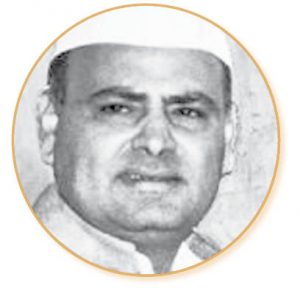 Feroze Gandhi (1912–1960): Feroze Gandhi was a journalist and an Indian politician, who served as an Indian MP under Jawaharlal Nehru. He served as the publisher of The National Herald and The Navjivan newspapers from Lucknow. He abandoned his studies to join the freedom struggle for independence and got imprisoned in 1930, along with Lal Bahadur Shastri (India’s second PM) in Faizabad Jail for nineteen months. In 1942, he married the late Indian PM, Indira Nehru. They had two sons, Rajiv Gandhi and Sanjay Gandhi. He went on to become Member of the Provincial Parliament and Member of Lok Sabha.
Feroze Gandhi (1912–1960): Feroze Gandhi was a journalist and an Indian politician, who served as an Indian MP under Jawaharlal Nehru. He served as the publisher of The National Herald and The Navjivan newspapers from Lucknow. He abandoned his studies to join the freedom struggle for independence and got imprisoned in 1930, along with Lal Bahadur Shastri (India’s second PM) in Faizabad Jail for nineteen months. In 1942, he married the late Indian PM, Indira Nehru. They had two sons, Rajiv Gandhi and Sanjay Gandhi. He went on to become Member of the Provincial Parliament and Member of Lok Sabha.
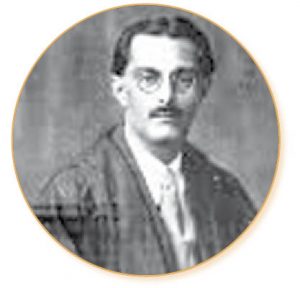 Khurshed Framji Nariman: was a staunch social activist and is remembered as the Mayor of Bombay. Born in the late 1800s, he was also known as ‘Veer Nariman’, and was a second generation Parsi stalwart in the Indian National Congress. His political career as a youth leader and the Bombay Municipality was widely supported by Vallabhbhai Patel. He was influenced by Mahatma Gandhi in 1930 and organised and led the Civil Disobedience Movement (Salt March) in Bombay. Bombay’s Nariman Point is named after him. He lived in South Mumbai at Horniman Circle and the road is named Veer Nariman Road in his honour.
Khurshed Framji Nariman: was a staunch social activist and is remembered as the Mayor of Bombay. Born in the late 1800s, he was also known as ‘Veer Nariman’, and was a second generation Parsi stalwart in the Indian National Congress. His political career as a youth leader and the Bombay Municipality was widely supported by Vallabhbhai Patel. He was influenced by Mahatma Gandhi in 1930 and organised and led the Civil Disobedience Movement (Salt March) in Bombay. Bombay’s Nariman Point is named after him. He lived in South Mumbai at Horniman Circle and the road is named Veer Nariman Road in his honour.
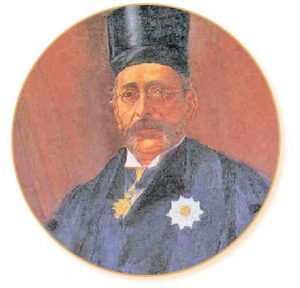 Sir Pherozeshah Mehta (1845–1915): was a political leader, activist and a leading lawyer knighted by the British Government. His moderate political ideology saw him not in direct opposition to the British Crown’s sovereignty, but in demand of greater autonomy for India. He was nicknamed ‘The Lion of Bombay’ and ‘Ferocious Mehta’ for his aggressive approach towards involving the active participation of Indians in politics. He drafted the Bombay Municipal Act of 1872 and is considered the father of Bombay Municipality. He became the Municipal Commissioner of Bombay Municipality in 1873 and presided as President for four terms. He was the co-founder and the first President of the Indian National Congress.
Sir Pherozeshah Mehta (1845–1915): was a political leader, activist and a leading lawyer knighted by the British Government. His moderate political ideology saw him not in direct opposition to the British Crown’s sovereignty, but in demand of greater autonomy for India. He was nicknamed ‘The Lion of Bombay’ and ‘Ferocious Mehta’ for his aggressive approach towards involving the active participation of Indians in politics. He drafted the Bombay Municipal Act of 1872 and is considered the father of Bombay Municipality. He became the Municipal Commissioner of Bombay Municipality in 1873 and presided as President for four terms. He was the co-founder and the first President of the Indian National Congress.
PARSI VALIANT WAR VETERANS
Lt. Gen. Adi Meherji Sethna PVSM Padma Bhushan (1924 – 2006): was the Vice Chief of the Indian Army Staff. After graduating from The Doon School and Allahabad University, he embarked on his military career in Malaysia during the Second World War. He was one of the few Indians to attend both the Imperial Defence College and the Camberly Staff College in England. He was ADC to the first Governor General of India C. Rajagopalachari as well as Dr. Rajendra Prasad, India’s first President. He played an active role in the strategy for the Bangladesh campaign and was awarded one of India’s highest awards, the Padma Bhushan, in addition to the Param Vishisht Seva Medal. He guided the Delhi Parsi Anjuman and the Federation of Zoroastrian Anjumans for 20 years. Adi Sethna was also the Founder President of the UNESCO Parsi-Zoroastrian Project. He died of cancer in 2006.
Air Marshal Minoo Merwan Engineer (1921–1997): was one of the most decorated officers of the Indian Air Force. He joined Royal Indian Air Force in 1940 and served in Burma during the World War. In 1948 he served in Jammu and Kashmir as the Station Commander of Srinagar Airfield and was awarded the Mahavir Chakra for his services there. He became Air Marshall in 1964 and was appointed as AOC-in Chief of Eastern Air Command and was awarded the Param Vishisht Seva Medal for his service in the Eastern sector. During the 1971 India-Pakistan War, he was AOC-in Chief of the Western Air Command. He was awarded the prestigious Padma Bhushan for his leadership and services.
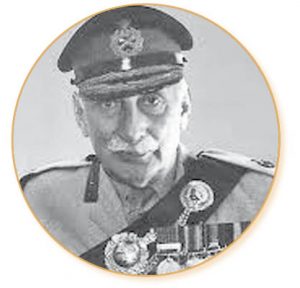 Field Marshal Sam Hormusji Framji Jamshedji Manekshaw, (1914 – 2008): was popularly known as Sam Bahadur (Sam the Brave), and was the former Indian Army Chief the first Indian Army officer to be promoted to the five-star rank of Field Marshal. His distinguished military career spanned four decades and five wars, beginning with service in the British Indian Army in World War II and then went on to lead the army in the Indo-Pakistan Wars of 1947 and 1965; the Sino-Indian War; and the Bangladesh Liberation War. During action in World War II, he was awarded the Military Cross for gallantry actions. Though he initially wanted to pursue a medical career, he joined the first batch of the Indian Military Academy (IMA) when it was established in 1932. His witty and humorous nature was his trademark right from the start. Manekshaw rose to become the 8th Chief of Army Staff of the Indian Army in 1969. Under his command, Indian forces conducted victorious campaigns against Pakistan in the Indo-Pakistani War of 1971 that led to the liberation of Bangladesh in December 1971. He was awarded the Padma Vibhushan and the Padma Bhushan for his services to the nation.
Field Marshal Sam Hormusji Framji Jamshedji Manekshaw, (1914 – 2008): was popularly known as Sam Bahadur (Sam the Brave), and was the former Indian Army Chief the first Indian Army officer to be promoted to the five-star rank of Field Marshal. His distinguished military career spanned four decades and five wars, beginning with service in the British Indian Army in World War II and then went on to lead the army in the Indo-Pakistan Wars of 1947 and 1965; the Sino-Indian War; and the Bangladesh Liberation War. During action in World War II, he was awarded the Military Cross for gallantry actions. Though he initially wanted to pursue a medical career, he joined the first batch of the Indian Military Academy (IMA) when it was established in 1932. His witty and humorous nature was his trademark right from the start. Manekshaw rose to become the 8th Chief of Army Staff of the Indian Army in 1969. Under his command, Indian forces conducted victorious campaigns against Pakistan in the Indo-Pakistani War of 1971 that led to the liberation of Bangladesh in December 1971. He was awarded the Padma Vibhushan and the Padma Bhushan for his services to the nation.
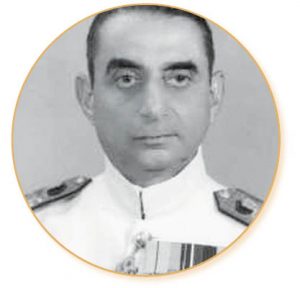 Admiral Jal Cursetji (born 1919): was the former Chief of the Naval Staff (Indian Navy). He served as the 10th Chief of the Naval Staff. His prior commands included those as the Flag Officer Commanding-in-Chief (FOC-IN-C) of the Western Naval Command and the Commanding Officer of INS Vikrant (R11) and HMIS Bombay (J249). He also served as the Naval Attache to the Indian Embassy in Washington DC and as the Chief Hydrographer of the Indian Navy. He valiantly participated in World War II, the annexation of Portuguese India and the Indo-Pakistani Wars of 1965 and 1971. He was awarded the Param Vishisht Seva Medal and the Legion of Merit by the Government for his bravery.
Admiral Jal Cursetji (born 1919): was the former Chief of the Naval Staff (Indian Navy). He served as the 10th Chief of the Naval Staff. His prior commands included those as the Flag Officer Commanding-in-Chief (FOC-IN-C) of the Western Naval Command and the Commanding Officer of INS Vikrant (R11) and HMIS Bombay (J249). He also served as the Naval Attache to the Indian Embassy in Washington DC and as the Chief Hydrographer of the Indian Navy. He valiantly participated in World War II, the annexation of Portuguese India and the Indo-Pakistani Wars of 1965 and 1971. He was awarded the Param Vishisht Seva Medal and the Legion of Merit by the Government for his bravery.
PVC Lt. Col. Ardeshir Burzorji Tarapore (1923 – 1965): of the Indian Army was an ace tank commander and was adored by the soldiers and officers who served under him. He schooled in Pune and on completion of his matriculation in 1940, applied to the Army and was selected to do his initial training in the Officers’ Training School Golconda. He participated in the Battle of Chawinda and the Indo-Pakistani War of 1965 and was awarded the Param Vir Chakra, India’s highest award for gallantry.
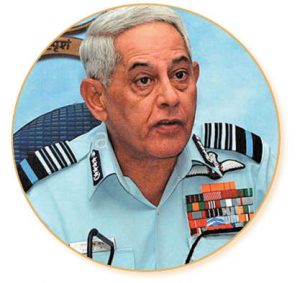 Air Chief Marshal Fali Homi Major (born 1947): was the former Chief of the Air Staff of the Indian Air Force. He made history as he took office as the Chief, on 1st April 2007, by becoming the first chopper (helicopter) pilot in the service to be promoted to the office of Chief. He participated in the Kargil War and won numerous awards for his bravery including the Shaurya Chakra, Vayu Sena Medal, Ati Vishisht Seva Medal and the Param Vishisht Seva Medal.
Air Chief Marshal Fali Homi Major (born 1947): was the former Chief of the Air Staff of the Indian Air Force. He made history as he took office as the Chief, on 1st April 2007, by becoming the first chopper (helicopter) pilot in the service to be promoted to the office of Chief. He participated in the Kargil War and won numerous awards for his bravery including the Shaurya Chakra, Vayu Sena Medal, Ati Vishisht Seva Medal and the Param Vishisht Seva Medal.
Lt. Gen.Faridoon Noshire Bilimoria PVSM (1933–2005): belonged to the Indian Army and fought the Indo-Pakistani War of 1971 as well as Operation Bluestar. Popularly called ‘General Billy’, he was the General Officer Commander-in-Chief of the Central Army Command (Indian Army). He served as ADC to the first Indian President, Rajendra Prasad, and commanded the Gorkha Rifles during the Bangladesh Liberation War. He was sent by the Indian Government to Sri Lanka in 1990 to review the work of the Indian Peace Keeping Force which had been deployed in that country during the Sri Lankan Civil War (under the Indo-Sri Lanka Accord), and it was on his recommendations that the force was recalled in 1990, ending India’s military engagement with the LTTE. He attended The Doon School in India. The ‘Lt. Gen. F. N. Bilimoria Trophy’, named after him, is awarded to the best officer in the graduating class of Army Medical Corps Centre and School in the Lucknow Cantonment. He was awarded the Param Vishisht Seva Medal. He was the father of the much respected Lord Karan Bilimoria.
Air Marshal Aspy Merwan Engineer (1912 – 2002): was the Former Chief of the Air Staff, Indian Air Force. He was trained at RAF Cranwell. Post service, he went on to serve as India’s ambassador to Iran. He was awarded Distinguished Flying Cross (DFC).
There was also General Noshir Karani who headed the Indian Armed Forces Medical Directorate.
Our community salutes and takes great pride in all our Parsi and Indian brave hearts who risked and continue to risk their lives to keep us safe… in the words of Winston S. Churchill, “We sleep safely at night because rough men stand ready to visit violence on those who would harm us.”
- દિકરી એટલે બીજી માં… - 20 April2024
- નાગપુરની બાઈ હીરાબાઈ એમ. મુલાનદરેમહેરનો ઇતિહાસ - 20 April2024
- વિશ્વ ભારતી સંસ્થાન દ્વારા રતિ વાડિયાનુંસન્માન કરવામાં આવ્યું - 20 April2024
